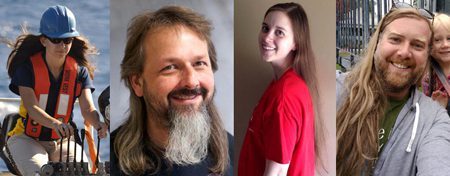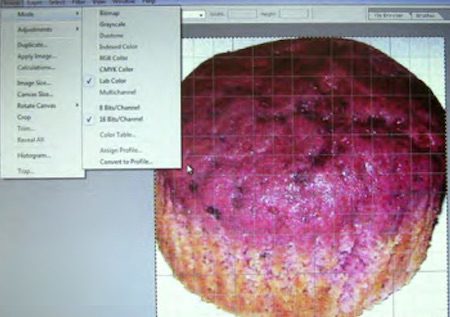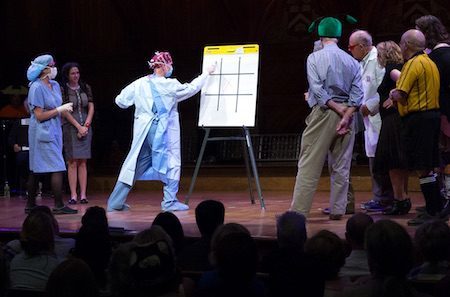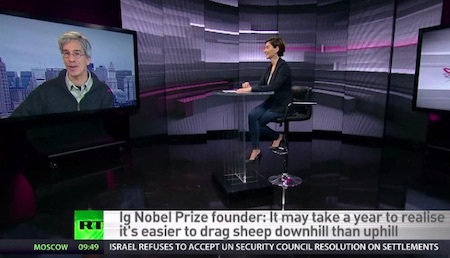Marc Abrahams's Blog, page 234
December 28, 2016
The Tay Bridge Disaster, remembered on its anniversary
Today, December 28, is the anniversary of the Tay Bridge Disaster — the much marveled-at new railway bridge over the River Tay collapsed during a fierce storm, dooming the passengers on a train. The tragedy is now remembered in connection with the disaster of the poem it inspired. The poem begins:
Beautiful Railway Bridge of the Silv’ry Tay!
Alas! I am very sorry to say
That ninety lives have been taken away
On the last Sabbath day of 1879,
Which will be remember’d for a very long time….
William McGonagall wrote the poem, which has already been remember’d for a very long time. The poet’s family name, at least, is familiar to readers of the Harry Potter books, wherein teaches a beloved character named “Professor McGonagall.” The real, non-Pottered McGonagall’s grave — William Topaz McGonagall’s grave — is in the cemetery near the coffee shop where J.K. Rowling wrote the first Harry Potter book.
We made three videos involving the poem. In this first video, Dr. Elena Bodnar (Ig Nobel Prize-winning inventor of the Emergency Bra) and Terry Jones (an original Monty Python) perform a Ukrainian translation of part of the poem.To the best of our knowledge this is the first time the poem was performed, even partially, in Ukrainian:
In the next video, passengers in a train on the Tay Bridge recite the poem. To the best of our knowledge this is the first time the poem was recited by a group on a train on the bridge. Several of these passengers are Ig Nobel Prize winners, others are University of Dundee students and staff, mixed among the normal collection of people who happen to ride that train, some of whom join in the recitation while others stoically endure:
In the third video, a group of actors perform the poem together, at the Central Square Theater, Cambridge, Massachusetts USA, as part of the 2011 Cambridge Science Festival. The readers are Dafydd ap Rees, Debra Wise, Robin Abrahams, David Kessler, Ig Nobel Prize winner Patricia Priest, Daniel Rosenberg and Roberta Gilbert:
Every March, during selected shows in the Ig Nobel Tour of the UK (for the UK’s National Science Week), we, often joined by the entire audience perform the poem. Consider yourself warned, should you be considering whether to attend these events. Several of our favorite performances happened at the University of Dundee, within walking distance of the Tay Bridge.
There exists a video of Billy Connolly performing the poem on a hill in Dundee, Scotland, overlooking the Tay Bridge, in a snowstorm. It is perhaps the greatest performance of the poem by anyone other than the author. (McGonagall himself often was pelted with peas when he performed his poems, a fact that did not prevent him from repeatedly performing them in public.)
Here’s a “Scotland on TV” look at William McGonagall’s life and works. It includes a snippet of Billy Connolly’s hilltop reading:

December 27, 2016
2016 in Hair (Luxuriant Flowing Hair Club for Scientists™)
Here at close of 2016 The Luxuriant Flowing Hair Club for Scientists (LFHCfS), and it’s sibling clubs, have collected the year’s new members into its 2016 Members Gallery.

K. Bell, M. Coffey, M. Glesner, and K. Wampler are among the 2016 members of the LFHCfS
Individual members are first announced as they are inducted throughout the year, in the Improbable Blog’s Hair Club section (with one exception this year**), and then collected into an annual gallery in the hair clubs’ website each December.
State of The Hair Clubs:
In 2016 the clubs gained 14 new members from 4 countries, for a grand total of 553 members – unless someone else joins between now and New Year’s Day.
Woman and Man of The Year:
In January we will announce the hair clubs’ 2017 Woman and Man of the Year! (Meanwhile, you can still read about the 2016 Woman and Man of the Year.)
Nominate a Member:
Do you believe that you or someone you know qualifies to be in The Luxuriant Flowing (or Former, or Facial) Hair Club for Scientists? Or is there someone who deserves to be an Historical Honorary member?
BONUS: “Mutations in Three Genes Encoding Proteins Involved in Hair Shaft Formation Cause Uncombable Hair Syndrome” (The American Journal of Human Genetics. December, 2016). This condition is also known as, “cheveux incoiffables” and as “pili trianguli et canaliculi”.
** The one exception to 2016 members appearing first in the Improbable Blog is Andreas Carlson, who was offered membership during the March 2016 Ig Tour of Norway, Denmark, Sweden, & the UK. In November 2016 he confirmed that he wanted membership in The Luxuriant Former Hair Club for Scientists.

Medical Usefulness of Tic Tac Toe: A Limitation
The game of tic tac toe is not useful for every medical situation. This paper makes that clear:
“Tic-tac-toe does not provide lessons for appreciating the HLA–rheumatoid arthritis relationship: Comment on the editorial by Bridges et al.,” A.H.M. van der Helm-van Mil, T. W. J. Huizinga, R.R.P. de Vries, and R.E.M. Toes, Arthritis and Rheumatism, vol. 58, no. 11, 2008, p. 3635.
BONUS: This photo shows a pediatric neurosurgeon —Dr. Joseph Madsen of Boston Children’s Hospital, assisted by neurosurgical operating room nurse Judie Jackson) — engaged in a game of tic tac toe at the 2016 Ig Nobel Prize ceremony. (Details are in the special 2016 Ig Nobel issue of the magazine.) The photo was taken by Howard I. Cannon:

December 26, 2016
The Lovejoy Comet (Cock)Tail – a festive recipe
 Improbable’s Call for Papers on “The nutritional value of comets” Mini-Annals of Improbable Research, Issue Number 1994-02, June, 1994, is still open. For inspiration with your submissions, what better time is there to prepare a Lovejoy Comet (Cock)Tail? Here is the recipe – inspired by chemical components that are all readily available on Comet Lovejoy – but using easily available (and considerably safer) earthly substitutes.
Improbable’s Call for Papers on “The nutritional value of comets” Mini-Annals of Improbable Research, Issue Number 1994-02, June, 1994, is still open. For inspiration with your submissions, what better time is there to prepare a Lovejoy Comet (Cock)Tail? Here is the recipe – inspired by chemical components that are all readily available on Comet Lovejoy – but using easily available (and considerably safer) earthly substitutes.
• Ethyl Alcohol C2H5OH (use Vodka instead – two shots)
• Glycolaldehyde CH2OHCHO (the simplest ‘sugar’ – use cane sugar instead – to taste)
• Methyl formate HCOOCH3 (with its ‘ethereal’ lemony odor – use lemon juice instead – to taste)
• Ice H2O solid-phase (as required, but don’t overdo it)
Note: The (cock)tail should ideally be served in a greenish-blue glass for optimal effects – in tribute to the comet’s spectacular colours (see photo).
REFERENCE: ‘Ethyl alcohol and sugar in comet C/2014 Q2 (Lovejoy)’ Nicolas Biver, Dominique Bockelée-Morvan, Raphaël Moreno, Jacques Crovisier, Pierre Colom, Dariusz C. Lis, Aage Sandqvist, Jérémie Boissier, Didier Despois, Stefanie N. Milam, in Science Advances 23 Oct 2015: Vol. 1, no. 9.
p.s. Two Lovejoys are not enough – three are too many.

Ig Nobel Prize interview on the RT Network
Sophie Shevardnadze interviewed me about the Ig Nobel Prizes, on the RT network’s “Sophie & Co.” program. I had cut myself shaving, that morning, before traveling to the TV studio. In the video here, you can see me bleeding all over Russian TV for a half hour while discussing improbable research with Sophie:

December 25, 2016
Three Heralds of the Rising Star Plastic World
We live in a Rising Star Plastic world. That’s what the evidence suggests. Here’s the evidence:
FIRST. Daniel Y. Maman, MD, [pictured here]:
“has been named a ‘Rising Star in Plastic Surgery’ by The New York Times, and he is a regularly featured surgeon on The Plastic Surgery Channel (PSC)”, and
“he has lectured to his peers both domestically and internationally”, and
“he is devoted to providing an unprecedented level of patient care”, and
“you can read all about Dr. Maman in the latest issue of Lifestyles”.
SECOND. “A Rising Star Plastic Surgery & Spa Inc is a Florida Domestic Profit Corporation filed on June 30, 2015 . The company‘s filing status is listed as Active and its File Number is P15000056746.”
THIRD.  Rising Star Plastic Enterprise Company‘s Odorless Shrinkfilm “is made from odorless ingredient, no smell”.
Rising Star Plastic Enterprise Company‘s Odorless Shrinkfilm “is made from odorless ingredient, no smell”.
These are the foremost pieces of evidence that we live in a Rising Star Plastic World.

December 24, 2016
Functional cupcakes: A double helping of research
These two studies are believed to be the first published academic studies of functional cupcakes. Ali Rashad Abdel-Moemin, the author of both papers, is based at Helwan University, Cairo, Egypt.
What is a functional cupcake? Neither paper defines the phrase. If you know what a functional cupcake is, please spread your knowledge to persons who do not know what a functional cupcake is but who might benefit from knowing.
The two studies are:
“Effect of Roselle Calyces Concentrate with Other Ingredients on the Physiochemical and Sensory Properties of Cupcakes,” A.R. Abdel-Moemin, Journal of Food Processing and Technology, epub 2016.
and
“Effect of Roselle calyces extract on the chemical and sensory properties of functional cupcakes,” A.R. Abdel-Moemin, Food Science and Human Wellness, epub 2016.
Here is an image from the first study, showing a computer screen that is displaying an image of a functional cupcake:


December 22, 2016
Prof. Nunna’s graduation mortarboard display holder (New Patent)

 Professor Ramakrishna Nunna, [pictured left] who is Dean of the Lyles College of Engineering, US, and Walter Mizuno M.S. [pictured right] who is a lecturer at the college, are the inventors of the world’s first (and newly patented) Graduation mortarboard display holder. (United States Patent 9,468,247, October 18, 2016, assigned to California State University, Fresno California.)
Professor Ramakrishna Nunna, [pictured left] who is Dean of the Lyles College of Engineering, US, and Walter Mizuno M.S. [pictured right] who is a lecturer at the college, are the inventors of the world’s first (and newly patented) Graduation mortarboard display holder. (United States Patent 9,468,247, October 18, 2016, assigned to California State University, Fresno California.)
Here’s the raison d’être and the modus operandi :
“During graduation exercises, the graduating students are dressed uniformly in matching robes and mortarboards. From certain angles, the broad mortarboards can obscure the faces of graduating students. Parents, friends and loved ones have difficulty distinguishing the graduating student of interest in large graduating classes due to the uniformity of dress and the mortarboard acting to block facial features. Also, many graduating students chafe at the forced uniformity of graduation dress. Some wish to express their individuality during one of the most important days of their lives.
To express some individuality, some graduating students embellish the top of their respective mortarboards by drawing on or gluing designs to them. These modifications are generally permanent. Since many graduating students rent or borrow graduation outfits, permanent modification of the top of the rented or borrowed mortarboard is undesirable.
What is needed is a simple and non-permanent way for graduating students to individualize their mortarboards to make it easier for their loved ones to spot the individual in a crowd, and to express the wearer’s messages, feelings, and sentiments on graduation day.
[…]
This invention is a mortar board display holder comprising a board clip portion, a display supporter portion, and a connecting portion joining the board clip portion and the display supporter portion. The board clip portion has a flat upper prong having a first plane, a flat lower prong having a second plane, and a spacing member that holds the upper prong fixably spaced from the lower prong such that the second plane is substantially parallel to the first plane. The display supporter portion has a flat first leg having a third plane, a flat second leg having a fourth plane, and a holding member that holds the first leg and the second leg such that the third plane is substantially parallel to the fourth plane. ”
Note: Fresno State undergraduate regalia (cap, gown and tassel) ($31.50+ $2.59 tax) and graduate regalia (cap, gown, tassel and hood) ($64.50 + $5.30 tax) are available here (Improbable has made attempts to contact the inventors regarding commercial availability of the display holder, but with little, if any, success).

December 21, 2016
A very Ig Nobel start with your magazines…
Your Annals of Improbable Research subscription will start with the special Ig Nobel issue — if you subscribe now.
The magazine brings you research that makes people LAUGH, then THINK.
Real research, about anything and everything, from everywhere —research that’s maybe good or bad, important or trivial, valuable or worthless. Compiled for you, by the producers of the Ig Nobel Prize ceremony. Six (6) new Improbable issues every year!

Does One Armpit Smell Like the Other? (podcast #95)
Does the left armpit smell like the right armpit? A research study explores that very question, and we explore that study, in this week’s Improbable Research podcast.
SUBSCRIBE on Play.it, iTunes, or Spotify to get a new episode every week, free.
This week, Marc Abrahams discusses a published armpitty study, with dramatic readings from biologist Christina Agapakis, who has smelled more armpits, mostly for scientific reasons, than most people ever will.
For more info about what we discuss this week, go explore:
“Human Axillary Odor: Are There Side-Related Perceptual Differences?” Camille Ferdenzi, Benoist Schaal, and S. Craig Roberts, Chemical Senses, vol. 34, no. 7, 2009, pp. 565-571.
Axilla.

The mysterious John Schedler or the shadowy Bruce Petschek perhaps did the sound engineering this week.
The Improbable Research podcast is all about research that makes people LAUGH, then THINK — real research, about anything and everything, from everywhere —research that may be good or bad, important or trivial, valuable or worthless. CBS distributes it, on the CBS Play.it web site, and on iTunes and Spotify).
NEXT POST: xxxxxxxx

Marc Abrahams's Blog
- Marc Abrahams's profile
- 14 followers







